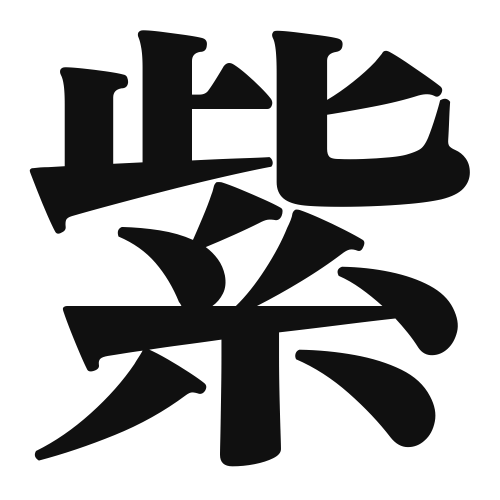1. Overview of Meaning
The kanji “紫” (pronounced “murasaki” in Japanese) means “purple.” It represents a color that is often associated with nobility, luxury, and spirituality in various cultures.
2. Formation and Radical
Formation of the Kanji: The kanji “紫” is a phono-semantic compound character (形声文字), which means it combines both a meaning component and a phonetic component. The left part of the character is a radical that relates to colors, while the right part provides the phonetic reading.
Radical: The radical for “紫” is “紫” itself, which is used to denote colors related to purple.
3. Examples of Usage
Common Words and Phrases:
- 紫色 (murasaki-iro) – purple color
- 紫陽花 (ajisai) – hydrangea, a flower that can be purple
Example Sentences in Daily Conversation:
- このドレスは紫色です。 (Kono doresu wa murasaki-iro desu.) – This dress is purple.
- 紫陽花が庭に咲いています。 (Ajisai ga niwa ni saiteimasu.) – The hydrangeas are blooming in the garden.
4. Synonyms and Antonyms
Similar Kanji:
- 青 (ao) – blue; while both are colors, “青” refers to blue or greenish tones, whereas “紫” specifically refers to purple.
- 赤 (aka) – red; this is another color but is distinctly different from purple.
Antonyms:
- 緑 (midori) – green; this color is often seen as opposite to purple in terms of color wheel positioning.
5. Cultural and Historical Background
Relation to Japanese Culture: In Japan, the color purple has historically been associated with the aristocracy and is often seen in traditional clothing and art. It symbolizes elegance and refinement.
Proverbs and Idioms:
- 紫の花 (murasaki no hana) – often used in poetry to evoke beauty and grace.
